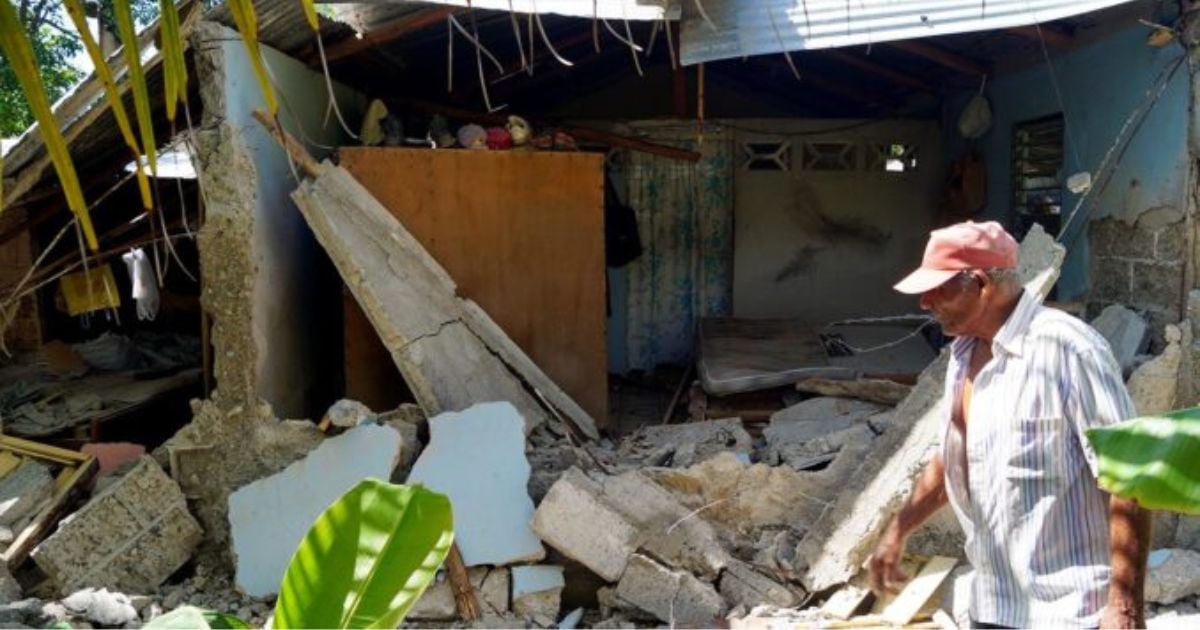In the wake of the National Seismological Service recording 1,799 earthquakes within the past 48 hours—including a foreshock of magnitude 6.0 and a main event of 6.7—rumors have circulated among the populace. Some believe this seismic activity might be connected to recent hurricanes or the activation of power plants. Eberto Hernández Suró, a geological engineer and seismologist with over thirty years of experience studying seismic activity in Cuba, especially in Granma, clarified to La Demajagua that "the movements of tectonic plates are the primary cause of these tremors."
He further emphasized that "external factors like recent hurricanes do not trigger earthquakes." Although he acknowledged that there have been past debates about potential interactions between climatic and seismic events, he stressed that "the general conclusion is that seismic phenomena are tectonic in origin, and any coincidence with other natural events is merely that—a coincidence."
Historical Seismic Activity in Granma
Hernández reminded listeners that the Chivirico and Pilón areas, known for high seismic activity due to rock fractures, have a history of earthquakes dating back to 1553. He explained that the period of aftershocks could last for days, weeks, or even months. Despite the high number of tremors, the energy released is limited, and the impact on the population is usually minimal.
The perception of these events depends on several factors, not just the magnitude of the earthquake. Proximity to the epicenter and the position of individuals at the time of the tremor—whether lying down, standing, etc.—are also crucial factors.
Seismic Risks and Recurrence
The expert pointed out that despite the damage from the earthquakes southeast of Pilón, they are considered moderate in magnitude. Recalling similar events, he mentioned the January 28, 2021, earthquake of 7.1 near the Cayman Islands, which was felt clearly across the region.
Discussing recurrence, which is the time interval between significant seismic events, he noted, "The Bartlett Cayman zone, where these epicenters are located, can produce even larger earthquakes. These areas have experienced long recurrence times." He explained that "the recurrence time in the Chivirico-Pilón and Pilón-Cabo Cruz zones has been quite lengthy. The longer this period, the more energy accumulates, suggesting that when such an event does occur, it could be of significant magnitude."
Public Concerns and Seismic Intensity
Among public opinions, there is a belief that certain factors could make earthquakes more harmful, including their depth and proximity to the sea or land. The seismologist explained that the perceptibility of a seismic event, which defines its intensity, is influenced by various factors, with the distance from the epicenter being one of the most significant: the farther from the seismic source, the less intense the sensation of the seismic wave.
"Another important concern in the province, particularly in Bayamo and Manzanillo cities, is soil quality. Weaker soils can amplify the intensity of seismic waves, increasing the impact of earthquakes in these areas," he explained. The composition of the terrain in these cities, consisting of clayey and sandy soils, tends to behave unfavorably during an earthquake, enhancing the perception of the event.
In contrast, firm and rocky soils tend to dampen seismic waves, acting as a barrier that reduces their energy. Therefore, the geographic characteristics of each location are crucial in how earthquakes are experienced.
Depth and Implications of Seismic Events
The depth of a seismic event is another determining factor, and Hernández clarified that this refers to the point where the rock fracture occurs, known as the hypocenter, whose surface projection defines the epicenter. "Shallow seismic events, although not always of great magnitude, can be catastrophic as they require less energy to produce a strong impact. In the Bartlett Cayman area, earthquakes generally occur at depths between 10 and 20 kilometers; however, those recorded at five kilometers depth are more concerning because they can cause significant damage with very little energy."
Finally, the seismologist noted that "in Cuba, a significant earthquake is estimated to occur approximately every 80 to 90 years. We have been granted two extra years of grace, as 92 years have passed since the last major event in Cabo Cruz, increasing the concern that the accumulated energy in the subsurface is reaching a critical point."
"The accumulation of energy in the tectonic fault is a significant risk factor. Research indicates that the region is loaded, and the lateral movement of the plates is constant, suggesting that this energy cannot be sustained indefinitely. An adjustment is likely to occur at some point, underscoring the need for preparedness and awareness of the region's seismic potential," he reiterated.
Responses from Seismological Experts
This Monday, Dr. Enrique Diego Arango Arias, head of the National Seismological Service of Cuba at the National Center for Seismological Research (CENAIS), responded to statements made by American geologist Grenville Draper regarding recent seismic events southeast of Pilón in Granma province. Draper, a researcher at Florida International University (FIU), told Telemundo 51 that "there is a main earthquake followed by smaller ones. Others may follow, and I would advise residents to avoid buildings potentially damaged by the first major earthquake."
He also mentioned, "There may be minor tremors. Generally, the pattern is smaller aftershocks. Occasionally, there can be larger aftershocks, but it is not common."
These remarks prompted Dr. Arango, with decades of study and dedication to seismology in Cuba, to make some clarifications. "A replica is never greater than a main earthquake. It is incorrect to say this. The 6.0 magnitude earthquake was a foreshock to the 6.7 earthquake recorded subsequently," Arango stated.
Moreover, the head of the National Seismological Service of Cuba asserted that CENAIS has "a team of specialists from various fields, such as civil engineers, geologists, and seismologists, with sufficient knowledge to handle this situation," suggesting that recommendations for managing the current seismic crisis would be more effective if made by Cuban specialists.
